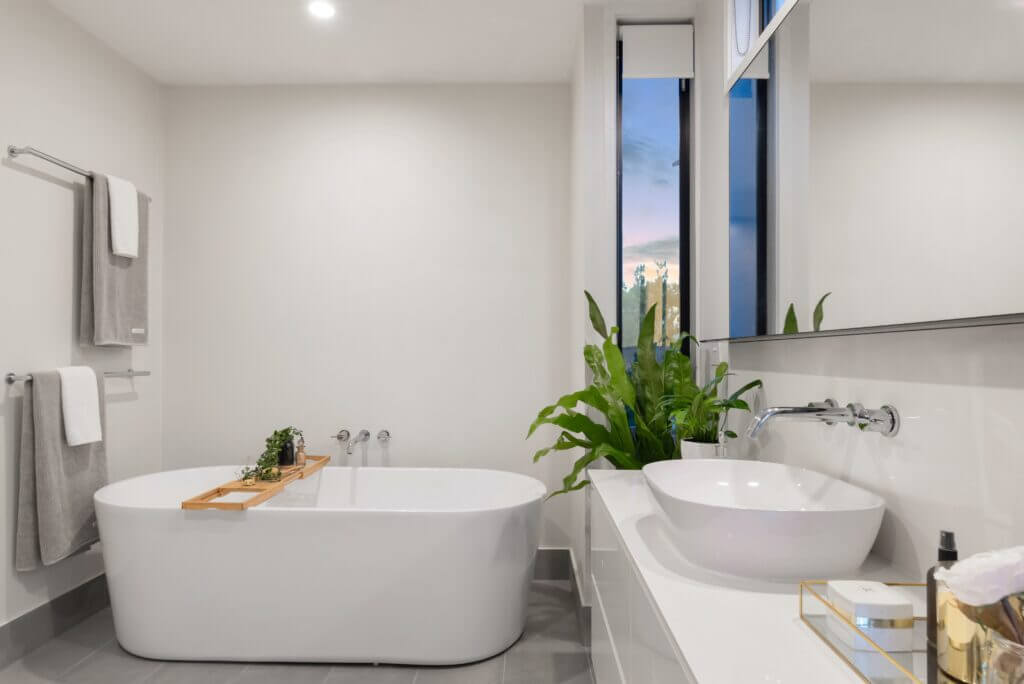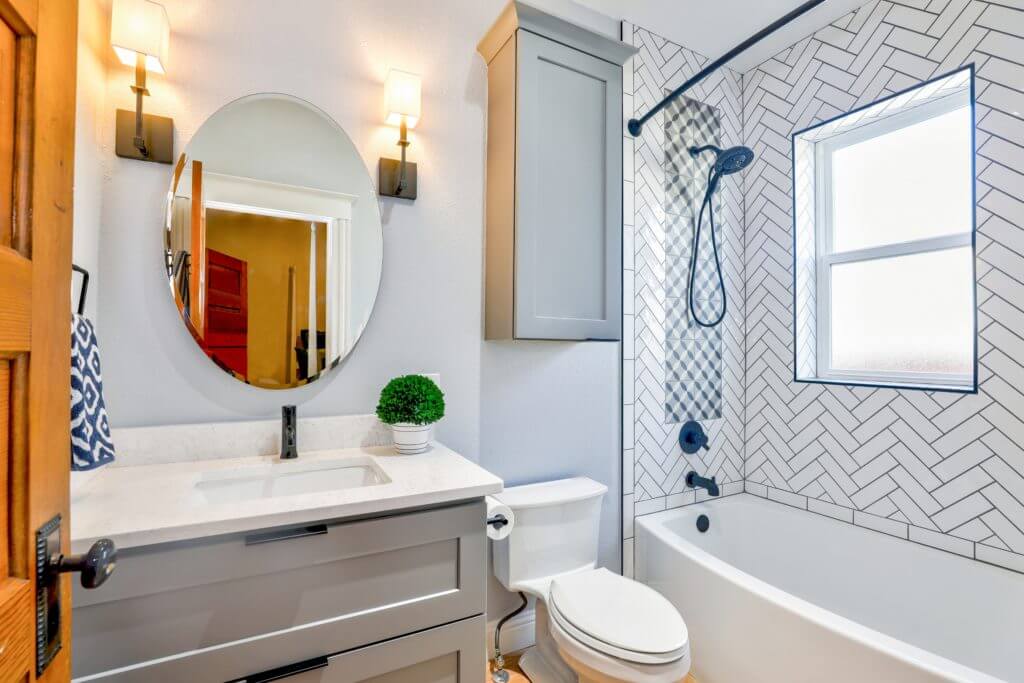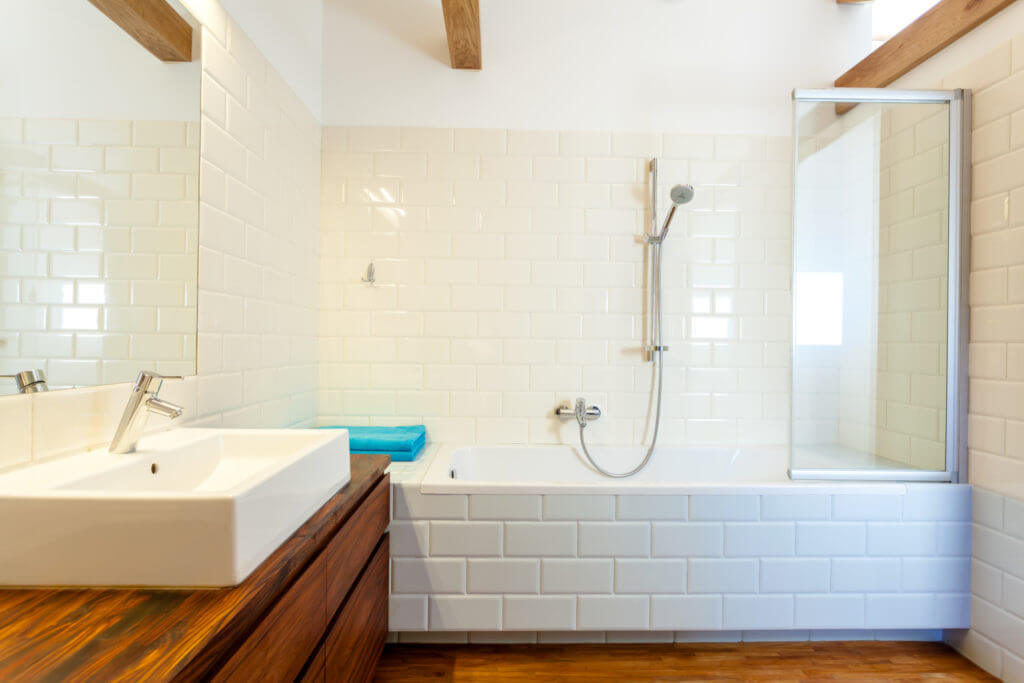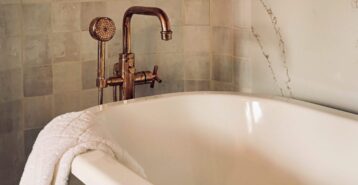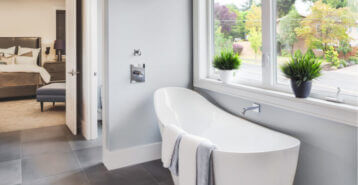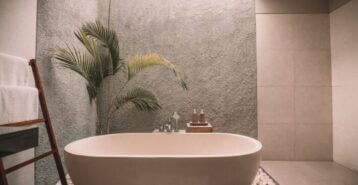- Bathtub Replacement Cost
- What is a Bathroom Tub Replacement vs Bathtub Installation?
- Sample Tub Replacement Cost Breakdown in 2025
- Average Tub Installation Cost
- Cost by New Bathtub Type
- Bathtub Replacement Cost by Bathtub Material
- Labor Cost to Replace Bathtub
- Other Tub Replacement Factors That Impact Cost
- Refinish or Replace?
- Is a Bathtub Replacement Worth It?
- Tips for Reducing Bathtub Replacement Cost
- Professional vs DIY?
- Hiring a Bathtub Contractor
- Frequently Asked Questions
Bathtub Replacement Cost
The cost to replace a tub ranges from $659 for a basic bathtub to $5,160 or more for a luxury-style tub. Your bathtub replacement cost depends on the bathtub you choose (including the brand or manufacturer), the cost of labor in your area, and any plumbing work that might be necessary to get your new bathtub up and running.
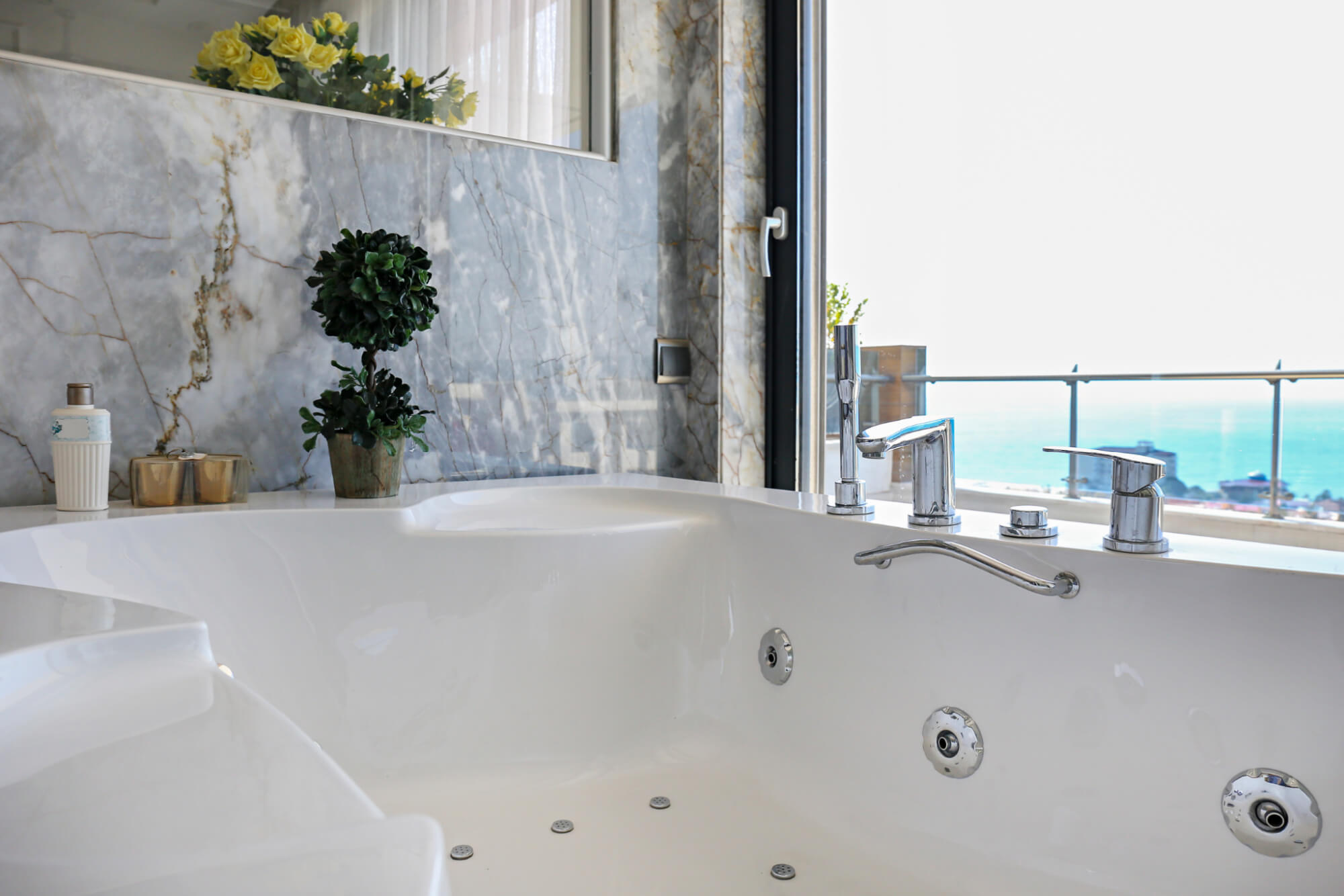
Bathtub Replacement
Average Installation Cost $659 - $5,160
Cost Breakdown
- Materials 86.4%
- Labor 13.6%
Your tub replacement cost will ultimately depend on what you want out of a new tub, your bathroom’s limitations, and, of course, your budget. There are lots of ways to make replacing a bathtub more affordable.
What is a Bathroom Tub Replacement vs Bathtub Installation?
Though the terms “bathtub replacement” and “bathtub installation” are often used interchangeably, “replacement” typically includes removing an existing tub while “installation” refers solely to putting a new tub into a prepared space.
Here’s how that should factor into quotes you’re getting from contractors:
- A bathtub replacement cost breakdown should include both the removal of an existing tub as well as the cost of a new bathtub being installed. Ensure both are accounted for in any quotes you get.
- A bathtub installation cost breakdown often does not include tub removal/demolition. This is more appropriate for situations where a bathroom does not have an existing bathtub or where the tub has already been removed. Your quote should not include demolition costs.
On this page, we are discussing bathtub replacement. If you do not need an old tub removed or already have a space prepared for a new tub, then you simply need to look at new tub costs and labor costs.
Sample Tub Replacement Cost Breakdown in 2025
Here’s a look at major categories that impact how your project’s costs will break down along with average price ranges for each line item.
| Labor and Materials | Average Cost Range |
|---|---|
| Tub removal cost | $100 - $200 |
| Repairs or changes | $250 - $500 |
| New bathtub cost | $750 - $900 |
| Bathtub installation cost | $550 - $750 |
| Total | $1,650 - $2,350 |
Tub Removal
Removing a standard bathtub can cost under $100 if it’s a straightforward job that doesn’t involve removing tile, repairing walls, or extensive plumbing work. For more complex removals that might involve those extras or involve especially heavy or difficult to remove tubs, costs can increase to $300 to $500+. Both these cost ranges include the cost to dispose of the old tub.
Changes or Repairs to Your Bathtub Area
You may wind up needing no changes or repairs to your bathroom at all once the old tub is out. However, budget for any floor repairs or reinforcements, wall repairs, or plumbing adjustments so that you’re not caught off guard. The price range for each of these varies widely, and you know best what your own situation may require. If you are doing a fairly standard tub replacement and do not know of any major changes/repairs needed, we recommend budgeting $250 to $500 for any surprises.
Cost of New Bathtub
We have a cost table below showing average ranges for different tub types below. A new tub can range from $200 to $2,000+ depending on size, style, and material, but for our sample budget, we have picked a cost range of $750 to $900 for mid-range bathtub.
Bathtub Installation
Installing your new tub involves both lifting into place as well as hooking it up to the plumbing, installing any fixtures needed (like faucets), and then ensuring everything is water-tight. You can read more about all of these labor costs below. For the purposes of this example, we have chosen an average cost range of $550 to $750 for tub installation.
Average Tub Installation Cost
The average bathtub replacement cost is $2,075. However, the cost ranges from $650 to $3,500 for both the new tub itself as well as the labor work needed to install it.
| Low | $650 to $1,500 |
| Average | $1,500 to $3,000 |
| High | $3,000 to $5,000 |
The lower end of that range includes a standard sized alcove tub replacing a tub of the same size and style.
The higher cost range includes much larger tubs, including ones that use heavy materials like cast iron that can require subfloor reinforcement.
An average tub installation would include a mid-range tub like a soaking tub made out of a standard material like acrylic.
Cost by New Bathtub Type
The good news is there is no one answer to the question “how much does a bathtub cost,” so you can choose a tub type based on your budget. There are many different types of bathtubs you can choose from, and you can expect your chosen tub to be the single largest line-item in your budget in most cases. Here’s what to know about how much a new bathtub costs depending on the tub type you choose:
| Bathtub type | Average cost range |
|---|---|
| Alcove tub | $1,625 - $2,000 |
| Bathtub/shower combo | $510 - $938 |
| Drop-in tub | $4,230 - $5,160 |
| Soaking tub | $3,608 - $4,100 |
| Freestanding tub | $3,656 - $4,100 |
| Whirlpool tub | $5,500 - $7,500 |
| Walk-in tub | $3,500 - $18,200 |
Alcove Tub
An alcove tub is the typical bathtub that fits against three walls in your bathroom with an apron or surround only on the front side. Many alcove tubs come as a bathtub/shower combo with a shower head installed into the wall. These tubs range from $1,625 and $2,000 or so.
Bathtub Shower Combo
A shower can be added to almost tub type to create a combo. But there are also one-piece combination bathtub and shower models that combine the comfort of a tub with the convenience of a shower. If one-piece solutions don’t fit through the doorways of your home, the same combination can be created with pre-made panels. Expect to pay between $510 and $938 for this one-piece type. If you are choosing a tub and showerhead separately, costs will vary depending largely on the tub type, but can range from $2,990 to $8,150.
Drop-in Tub
A drop-in tub is “dropped” into an existing frame and then properly sealed to make it watertight. These tubs are often situated in the center of the bathroom or as a focal point against one wall. Drop-in tubs can run between $4,230 and $5,160, on average. If you choose a type of tub to be “dropped” into your frame that includes jets or other accessories, that cost can go up by thousands more.
Soaking Tub
Soaking tubs can also be considered general purpose tubs because they don’t have as many bells and whistles as other types. This type of tub is a minimum of 14 inches but at least 24 inches deep to allow you to submerge your whole body. The average is between $3,608 and $4,100 but indulging in a high-end model can go up to $13,000 or more.
Freestanding Tub
An example of a freestanding tub is a cast-iron, claw-foot tub that sits as the focal point of the room. These freestanding tubs do not have a surround and are great for unconventional, unique bathrooms. Expect them to run between $3,656 and $4,100.
Whirlpool Tub
Also known as a jetted tub or a massage tub, this type of tub has jets that are powered by either water or air. They might require additional installation work compared with other tubs, including electrical and plumbing. A jetted tub is also often bigger than a typical tub. Expect to pay between $5,500 and $7,500 on average and $17,000 or more for a higher-end tub.
Walk-in Tub
This is a specialty tub designed to help those with limited mobility keep up with regular hygiene. Walk-in tubs have a door with a water-tight seal that allows you to walk into the tub instead of stepping over a high lip. They are a great choice for elderly homeowners who want to live in their home for as long as possible. These tubs can run anywhere from about $3,500 to $18,200 or more.
Bathtub Replacement Cost by Bathtub Material
The material you choose for your bathtub greatly impacts the price. It also impacts how much you pay for labor, as some materials are much easier to work with than others. Bathtub material costs can vary depending on the tub’s size.
The table below shows tub material options and how much they should cost on average.
| Bathtub material | Average installation cost |
|---|---|
| Acrylic | $300 to $700 |
| Cast iron | $300 to $900 |
| Steel | $300 to $4,500 |
| Fiberglass | $400 to $6,500 |
| Ceramic tile | $500 to $6,000 |
| Solid surface | $2,100 to $8,000 |
| Copper | $2,200 to $8,000 |
| Granite or stone | $1,500 to $27,000 |
Acrylic
One of the most popular options, acrylic tubs are lightweight, affordable, and easy to clean. They also do an excellent job retaining heat, so your bath will stay warmer for longer.
Cast Iron
In addition to being a timeless material choice, cast iron is also the best bathtub material for retaining heat. It lends itself particularly well to luxurious tubs, like freestanding options. However, they are also extremely heavy, so they will cost more to install and may require reinforcements to your subfloor.
Steel
Steel tubs come with porcelain enameled over them. This combination of materials results in a very durable tub with a sleek, glossy look. Be aware it doesn’t retain heat as well as cast iron or acrylic, and the enamel can chip.
Fiberglass
Another affordable option, fiberglass is made from reinforced plastic and can come in several shapes and sizes as well as in a few different colors. This material can be prone to scratches, though.
Ceramic Tile
Unlike tubs that come prefabricated (like acrylic or fiberglass), this tub is built on-site and then finished with ceramic tile on the exterior. This extremely customizable tub is made with concrete, mortar, or a waterproof backer board before the tile is applied. This labor-intensive installation means this tub is more expensive than many other kinds.
Solid Surface
Made from a combination of crushed stone, acrylic, and resin, solid surface tubs are easy to clean and very resistant to scratching, staining, or chipping. Like cast iron and acrylic, this tub material does a great job retaining heat.
Copper
Copper tubs look luxurious and distinctive. While they do a good job retaining heat and are naturally bacteria-resistant, they are also heavy and fairly expensive. They also require more maintenance than other tub materials to prevent tarnishing.
Granite or Stone
These high-end tubs can either be carved from a single block of granite, marble, or other natural stone or constructed from pieces that are seamlessly joined together. They are extremely durable and can last a lifetime, but they also are much heavier than other tub material options and come in at the top of the market in terms of price.
To learn more about these options, you can read our guide to bathtub materials.
Labor Cost to Replace Bathtub
On average, contractor labor accounts for about 15% of the total bathtub replacement cost. Labor prices start as low as $79 to $145 for standard bathtub installations but can exceed $4,000 for more complex projects.
When estimating labor costs, consider the different phases of the project:
- Old tub removal. This includes demolition and disposal.
- New tub installation. This covers setting the tub in place, installing the surround, and handling other details.
- Fixture and faucet installation. The contractor will connect plumbing and ensure everything is functional.
If your bathroom has old plumbing lines or needs modifications to accommodate a different tub style, expect additional costs. Let’s break it down:
Old Tub Removal
Removing an existing tub typically costs between $59 and $108. This includes breaking up the tub, if necessary, and disposing of it—usually in a contractor-provided dumpster. Costs increase for heavy cast iron tubs due to the extra labor required.
Relocating Plumbing
Moving plumbing lines is often the most expensive part of a bathtub replacement. If your new tub aligns with your existing plumbing, you can save money. However, if you switch to a center-faucet tub from a traditional end-faucet design, plumbing lines must be relocated.
- Installing new lines: Starts at $400
- Running new lines to a different location: Can exceed $2,000
In most cases, a licensed plumber must perform or approve the work.
Labor to Install New Tub
Labor costs depend on the tub material, project complexity, and location. Installing an acrylic tub is more affordable than a cast iron model. Expect labor costs to range from a few hundred dollars to several thousand, depending on your specific project.
Subfloor Reinforcement
If your new tub is heavier than your old one, your subfloor may need reinforcement. For example, a marble tub requires a stronger frame to support its weight. Subfloor reinforcement typically costs between $300 and $800, depending on the work involved.
Other Tub Replacement Factors That Impact Cost
Tub Size
A bathtub that fits into the current space where your old tub resides can save you a great deal on labor costs. If you choose a bathtub that is a bit bigger, whether that means it’s wider, deeper, or longer, you can expect to see a higher cost not only for the tub itself, but for the work to make it fit in the existing space.
Keep in mind that a large bathtub might have difficulty fitting through a standard interior door. Larger tubs might require the contractor to remove the door trim or otherwise widen the space.
You can learn more about standard tub sizes by visiting our guide.
Specialty Bathtub Options
Choosing to add on features like jets, in-line tub heaters, chromotherapy, or other high-end options can significantly add to your tub’s overall cost.
Tile Installation
Even if you choose a standard-sized tub, you might need to opt for a bathtub surround made from pre-formed panels or have your contractor install tile around the tub. Depending upon the quality of that tile, you could see an additional $500 to $2,000 for the entire project.
Installing Fixtures
When you opt for a bathtub replacement, the bathtub itself doesn’t often come with fixtures. This is because with such a wide range of design concepts, you’ll want to choose fixtures for your bathtub that match the rest of your bathroom look and feel. Especially if you choose a freestanding tub, you will need to investigate your tub faucet options based on where it’s being installed. If it’s not near a wall, you’ll need a floor-mounted faucet. If it is near a wall, you can choose from either a wall-mounted or floor-mounted option. Those little extras can range anywhere from $140 to $241, on average, to much higher depending upon the labor involved.
Refinish or Replace?
If your tub has cracks and chips, is leaking, or is showing signs of age like discoloration, you could be a good candidate for bathtub refinishing instead of doing a full tub replacement.
Bathtub refinishing can cost anywhere from $500 to $2,000, with the average cost coming in right around $1k. This makes it significantly cheaper than a full bathtub replacement. You can explore our bathtub refinishing guide for more information or even explore Bath Fitter cost considerations if you want a brand name tub liner.
If your tub has reached the end of its lifespan, frequently requires repairs, or is simply outdated or uncomfortable, then you need a new bathtub. Improving the appearance of the old one will not solve your issues.
Is a Bathtub Replacement Worth It?
Yes, a bathtub replacement is worth the cost. A tub replacement project can have as high as a 67% return on investment. The most recent Cost vs Value mid-range bathroom remodeling data pinpoints this number. The project ROI has risen year over year for several years in a row.
A mid-range bathtub replacement would include tub materials like porcelain-enameled steel, fiberglass, or acrylic along with a ceramic tile surround.
Not only will you enjoy the updated look and feel of the new tub, but you will add value to your home if you are thinking of reselling in the future.
Tips for Reducing Bathtub Replacement Cost
Now that we’ve discussed the things that can drive up the bathtub installation cost, let’s talk about some ways you might be able to bring that number down.
- Keep the bathroom layout. The biggest way to ensure your price stays low is to keep the original configuration of the bathroom. That means you will not have to move any plumbing around. You might have to replace old lines, but that’s much more affordable than running entirely new ones. That alone could save you $1,500 or more.
- Consider prefabricated. When you choose your surround, keep in mind that a prefabricated one can save you hundreds of dollars over a tile installation. It’s not so much the materials here as the labor. A prefabricated surround can go up quickly while tile takes more work and time, especially if you have chosen an intricate design.
- Consider refinishing the existing tub. If the reason you are looking to do a bathtub replacement is because the current tub is showing signs of wear and tear, know that refinishing is a cost-friendly solution.
- Choose a budget-friendly style. You might want the nice jets or even the marble instead of a look-alike solid surface model. But if your budget doesn’t allow for that, look at the nicest tub you can afford. It’s still a bathtub replacement that can make your bathroom look great!
Also, if you are set on the bathtub of your dreams but short on cash, it’s helpful to know that financing is an option. Most bathroom remodelers these days will offer financing as a payment option.
Professional vs DIY?
It may be tempting to reduce your bathtub replacement costs by attempting a DIY installation. A good rule for DIY home improvements is to not take on projects that involve plumbing work, electrical work, or gas lines. Unless you have specialty knowledge of plumbing in addition to having help for the physical labor involved in installing a new tub, this project is best left to the pros.
A contractor can also help you handle issues like pulling permits, hiring subcontractors for tile work or electrical work if needed, and ensure the project is water-tight at the end to prevent future leaks.
Hiring a Bathtub Contractor
Once you’ve read up on bathtub remodeling and have a sense of what you want, it’s time to get quotes.
Plan to get three to four quotes to find the best price for your project. Asking for recommendations from neighbors or friends who have remodeled their bathrooms or replaced their tubs is a great place to start.
You can also browse our contractor directory to see the pros available in your area and request free quotes.
If you’d rather have Modernize do the research for you, click below to answer a few questions about your project, and we can match you with up to four great contractors.
